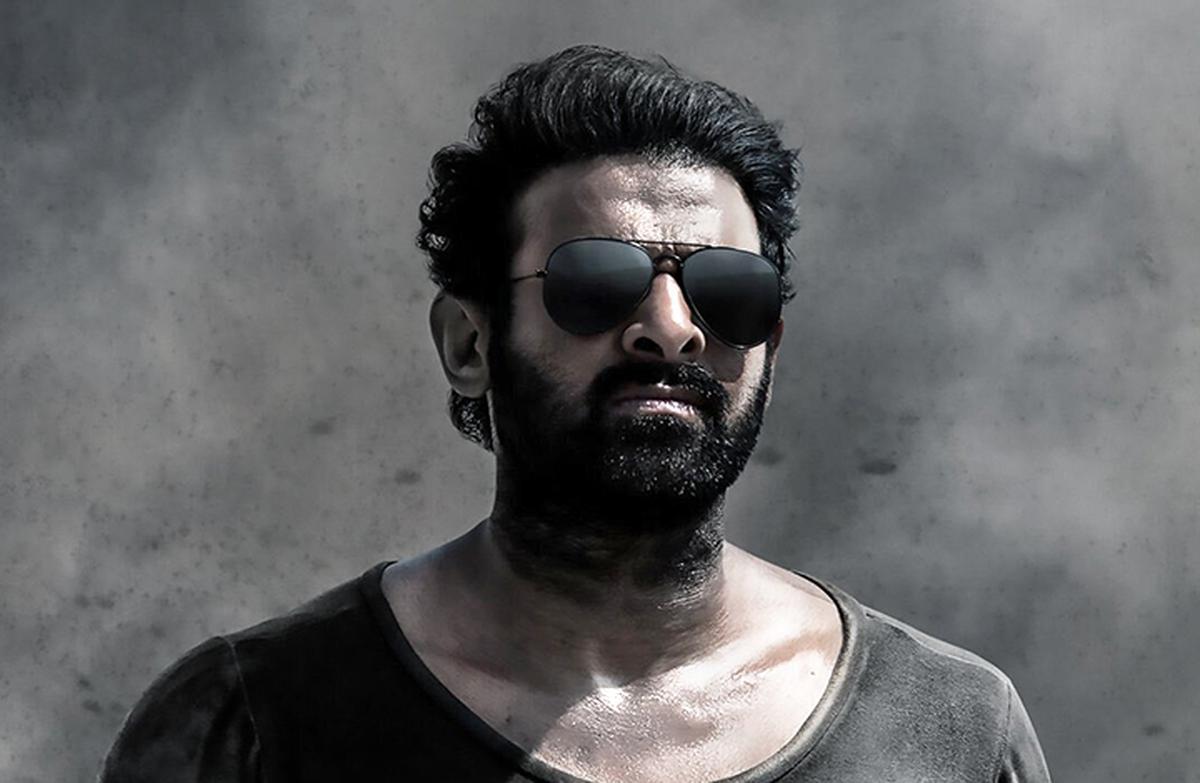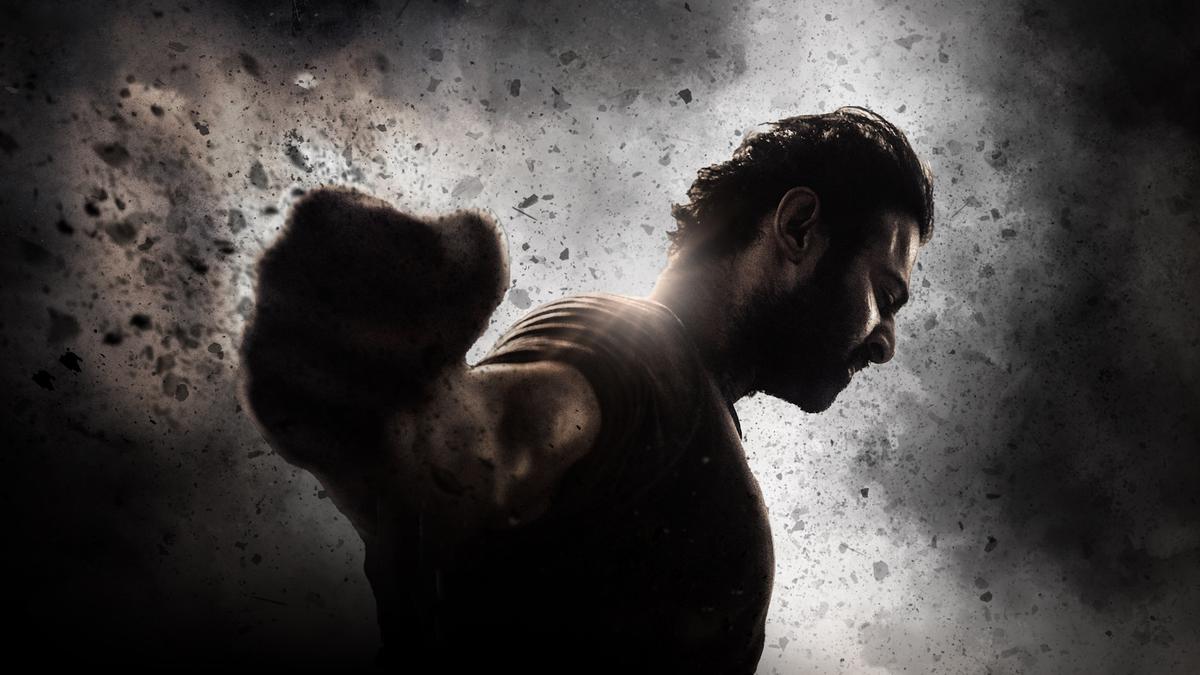One of the boys with whom Deva (Prabhas) plays cricket in the nondescript town of Tinsukia in Assam refers to his towering persona as ‘cutout’, a word that is commonly used by the star’s fans. Director Prashanth Neel uses this throwaway reference to reaffirm that this film, mounted on a massive scale, is a celebration of Prabhas’s stardom. At its bare bones, Salaar: Part 1 – the Ceasefire is a story of two friends — Deva and Varadaraja Mannar aka Varada (a regal, understated Prithviraj Sukumaran) — who turn enemies. It is a storyline that Neel has explored earlier. A considerable portion of Salaar draws from the director’s earlier Kannada film Ugramm; he repackages it in a KGF style, with stylised action choreography, and narrates it in the backdrop of a dystopian kingdom named Khansaar, depicted in soot-laden monochrome hues.
The film is slightly shy of three hours and Neel uses about an hour and 14 minutes, to be precise, to leisurely lead to the main story. It is only at intermission point that a character asks if we are ready for the story of Khansaar, Deva and Varadaraja Mannar. Neel is in no rush to get to the bottom of the drama, so it requires a good dose of patience to wait for the big picture to unravel.
We get glimpses of the after effects of events that have occurred in a far-off land whose name no one dares to mention. Fear is a leitmotif that underlines everything about the kingdom, which for a long time, is only referred to by a logo.
A childhood episode between Deva and Varada delineates why the former is indebted to the other and would go any length to stand by him. When the story takes a leap from the 1980s to 2017, Deva is in exile, working as a mechanic while his mother (Easwari Rao), scarred and seething from a bitter past, is a school teacher who wants children of coal mine workers to be educated so that they stand a chance for better future. Other characters that bear scars of the past and are waiting to settle scores include Radha Rama Mannar (Sriya Reddy) and her loyal aide Obulamma (Jhansi).
Salaar: Part 1: Ceasefire
Cast: Prabhas, Prithviraj Sukumaran, Shruti Haasan, Easwari Rao
Direction: Prashanth Neel
Music: Ravi Basrur
Storyline: Deva and Varadaraja Mannar are childhood friends in the war-torn land of Khansaar and years later, they are key players in a web of power politics.
For those who have watched Ugramm, the arrival of Aadhya (Shruti Haasan) and her plight will not come as a surprise. For the uninitiated, it is a regular mainstream trope of throwing a damsel into distress due to rivalry she isn’t aware of, which involves her father.
A common thread that binds Neel’s protagonists is the characterisation of a machismo protagonist who abides by his mother’s words. The ‘mother sentiment’ is predominant in this film as well. In Salaar, Neel uses it to show Deva containing his anger and still deliver mass moments. For instance, when Deva holds back from saving a woman, an iron pillar bears the brunt of his anger as the camera shows us his finger impressions on it. Elsewhere, he is asked to keep away a plastic knife used to cut a birthday cake, because, the other person knows what he can do even with it. All this is enough to elicit cheers from the audience that is patiently waiting for the high-action episodes to begin.

Prabhas in ‘Salaar: Part 1 – Ceasefire’
Neel does not make Prabhas talk much or even do much for a long time. He uses the actor’s tall, imposing persona to build an aura. Prabhas befits the part of a warrior in waiting; this is the best he has been showcased since Baahubali. A prolonged pre-interval action episode plays to the gallery and the credit goes to action choreographer duo Anbariv (Anbumani and Arivumani) and editor Ujwal Kulkarni. Bhuvan Gowda presents a visual palette that is reminiscent of the charcoal greys, blacks and browns of KGF. The kingdom also conjures up memories of Wakhanda from Black Panther movies. There is a lot of red in the later portions, which we shall get to in a bit.
When the actual politics of Khansaar unfolds, several characters pop up, played by Jagapathi Babu, Bobby Simha, John Vijay, Tinnu Anand, Shafi, Mime Gopal, Ramachandra Raju and Brahmaji, among others. It takes a while to understand who is who and their power equations.
If the first hour seems like a mere set up, the later portions have quite a bit to unpack. We get a gist of the history of Khansaar and its principal tribes, from the 12th century till the present and how the battlelines are drawn. Neel presents Khansaar as a present-day land, with the mention of mobile phones and aircraft, but takes cinematic liberty to give it a medieval treatment with tribal accessories, a fortress and a parliament building that has an old world court design replete with thrones. TL Venkatachalapathi’s production design deserves a mention.
If Khansaar seems impenetrable with its high walls and induces fear among those outside, there is also a smart reasoning of how this kingdom also has reasons to fear.
In this story of violent men, most women are reduced to shedding tears and having to be saved from becoming preys of sexual violence. The colour red is used to demarcate the tribal women in despair; vermillion red comes to fore when they pray to Goddess Kaateramma and much later the colour is used to denote aggression in men who are manipulated to behave like ‘wild dogs’. When Deva declares it is time to paint Khansaar red, it sets the stage for full-blown bloodbath.
There is plenty of violence — chopping of limbs and heads — which explains the film’s ‘A’ certificate. Most of this is executed in a stylised manner and the final stretch sets up the drama for a gritty battle between tribes, marking the return of a native. The brotherhood between Deva and Varada and their contrasting personalities drive the drama forward.
Salaar is tailored to cater to lovers of mass action entertainers. There is a lot of indulgent ‘build up’ with nearly every character — the mother, Obulamma, Rama, the businessman who fears for his daughter Aadya, the children, and several aides — talks in exalted terms about Deva at regular intervals. At one point, I wanted the film to cut the chase and tell us what makes him a fiery warlord.
The season of overdrawn action entertainers and mammoth war machines isn’t over, not yet.
Salaar: Part 1 – Ceasefire is currently running in theatres

